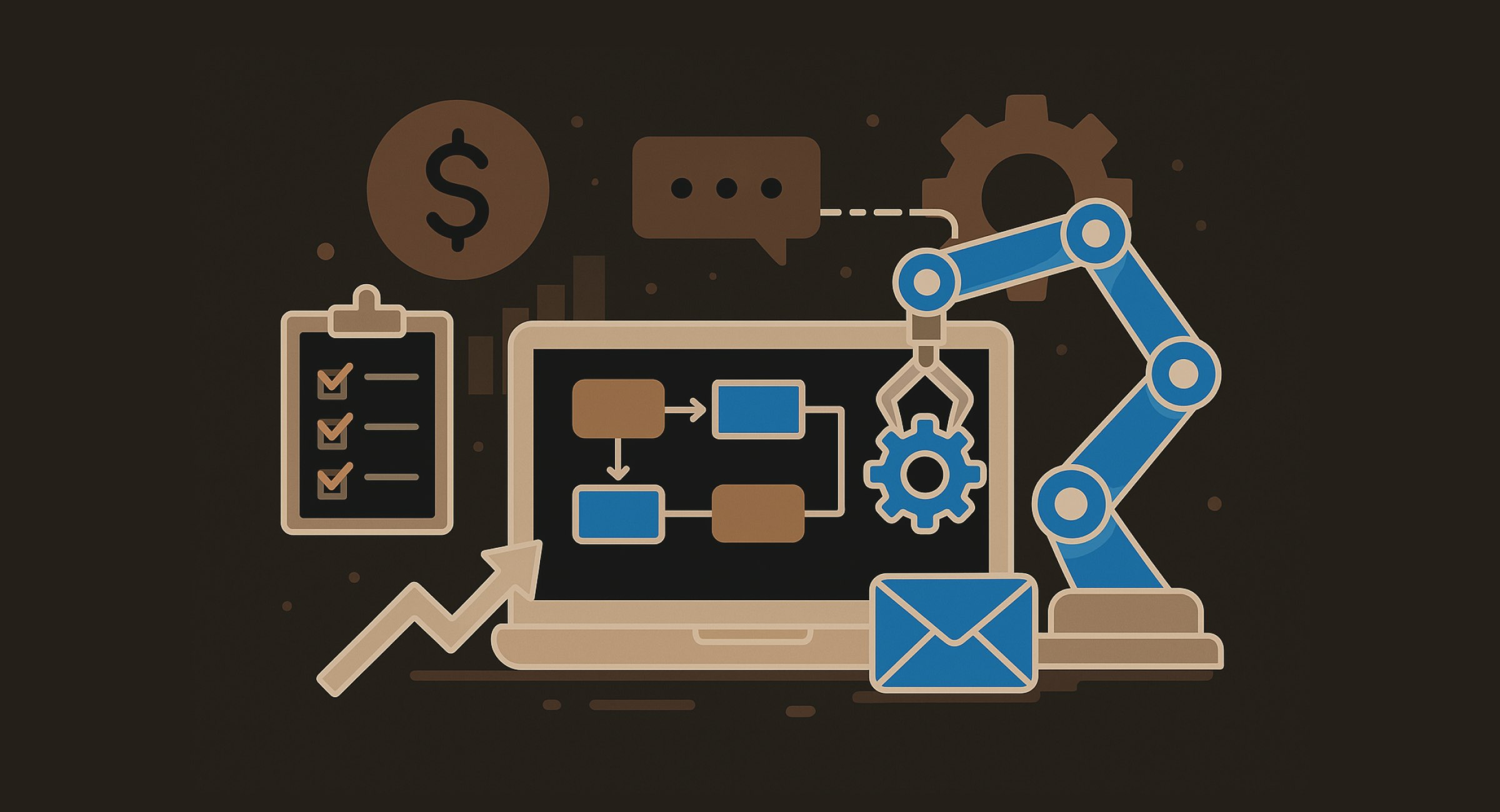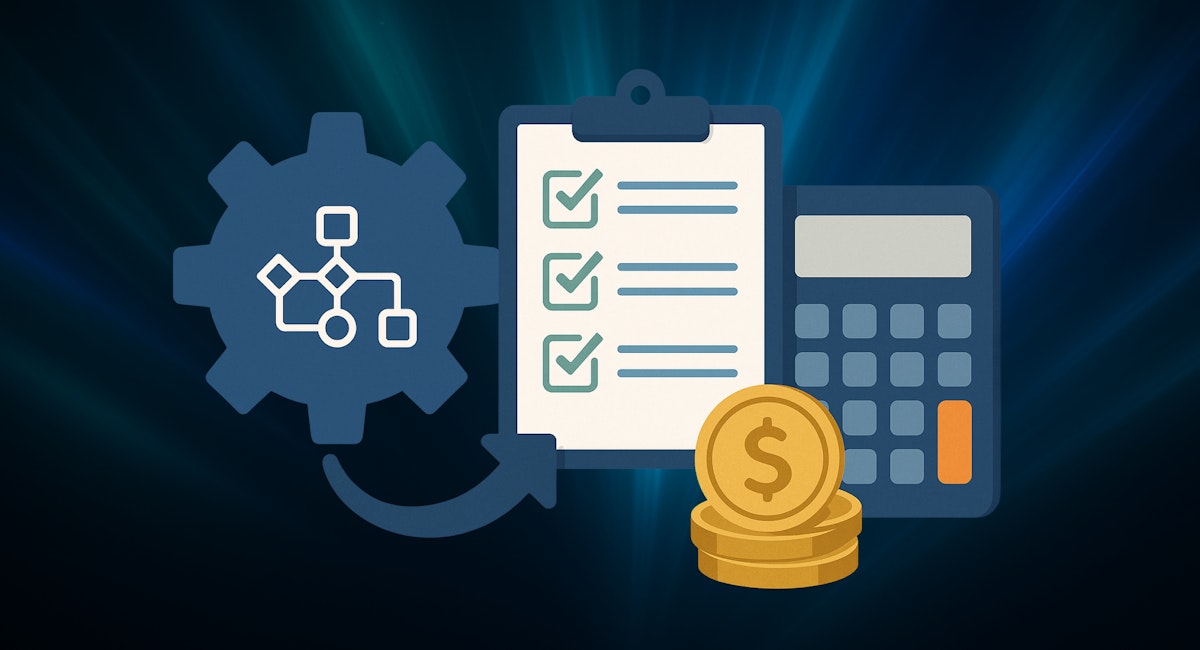Table of Content
Does your sales operation still run on spreadsheets, memory, and manual follow-ups? If it’s a ‘yes,’ don’t you feel the drag every hour? Just imagine: your lead waits while you copy data between tools. A promising reply gets a miss because the reminder never fired.
Handoffs stall, but you only find that out after the deal goes cold. Increasing sales revenue is challenging for 72% of SMBs. Why make it harder for yourself?
Automate sales and save about two hours daily, redirecting that time into actual prospecting and conversations.
How to Automate Your Sales Process: 7 Steps to Follow
1. Audit and map your current sales workflow
You can’t fix what you can’t see. Therefore, trace your existing workflow, starting from the moment a lead enters your funnel to the moment a deal closes. Make note of every detail:
- How leads arrive (website form, referral, or ads)
- Who first sees and qualifies the lead
- Who enters data into your CRM tool
Utilize tools such as Notion or Lucidchart to create a clean flowchart or bullet list of all your sales activities, neatly ordered based on priority. That will also share insights on where you pause, duplicate efforts, or drop the ball.
2. Identify automation opportunities
Now that you know your workflow, the next step is to pinpoint the places where automation can make a real difference. For starters, look for tasks that happen again and again, follow clear rules, and drain your time, like CRM data logging, lead routing, or demo scheduling.
You can obviously automate sales activities you identify in the above step. But as an SMB with limited resources and scope to get creative, it’s best to pick 1-2 tasks that are most important to your business.
For instance, you might realize that since leads are routed manually, reaching out to them takes you approximately four days, which is a long time if you want to kickstart a conversation.
Contacting new leads within five minutes is 100x more likely to convert than those that reply in 30 minutes. This may be from an old HBR study, but this hasn’t been true.
Intuz Case Study:
The ride-sharing company Swiftryde is an excellent example of thinking beyond today’s workflows to prepare for tomorrow’s challenges.
By implementing an AI dynamic pricing solution with our help, they automated real-time fare adjustments based on demand, driver availability, traffic, and weather conditions. This approach boosted revenue, reduced rider wait times, and improved regional profitability.
3. Select the right sales automation tools
Once the tasks to automate are decided, it’s time to choose sales process automation tools. Since there’s no shortage of such software in the market, we decided to make your job easier and did your homework. Here’s a tabular representation of all the main tools:
Please be sure to pick tools that:
- Can be customized as per your growing sales requirements
- Come with robust customer support and extensive training resources
- Are easy to use by everyone across your sales team and require little training
- Can be integrated with a myriad of software used by marketing, accounting, and operations teams
- Are cost-effective (deploying workflow automation can be expensive if you take the wrong decision)
A poor fit can slow adoption and cause your automation plan to stall.
Make vs n8n vs Zapier: Which is the Best Tool for Your Business?
Explore Now4. Design automation logic
This is where you tell your sales tools what to do and when to do it. Create a sequence of Triggers, Conditions, and Actions that runs your workflow without manual intervention. Let’s study this in greater detail with examples:
This is similar to giving your CRM system a set of “if-this-then-that” instructions.
5. Build automated custom workflows or sequences
With your sales workflow automation logic mapped, focus on the execution part. Start with pre-built templates (most CRMs and email platforms offer them) or build from scratch based on mapped triggers, conditions, and actions,
Here are three starter workflows your SMB can set up quickly:
7 Healthcare Workflow to Automate Using Low-Code/No-Code Tools
Explore Now6. Test sales process automation
Before rolling out workflows to every lead and customer, test them as you would a new product feature. You can create sample data or test leads that mimic real scenarios. Walk through each step to check:d
- Are triggers firing as they should?
- Are emails and tasks personalized correctly?
- Is data syncing across tools without errors and lag?
Log any errors, note where conditions fail, and make adjustments. Then, validate performance by comparing pre-automation KPIs, such as lead response time and closure rates, to post-automation numbers.
7. Train your team and monitor performance
Automation is only successful if your team understands it. Therefore, having everyone’s buy-in is extremely important. Set up simple dashboards in your CRM or BI tool to track metrics like lead response time, deal closure rate, and drop-off points in the pipeline.
More importantly, schedule monthly or quarterly performance reviews. Automation isn’t “set it and forget it.” Business priorities shift, and so should your workflows. Therefore, routinely ask tough questions:
- What’s now automated and what still needs manual attention
- How to pause or edit a workflow if something goes wrong
- Where to check for errors, updates, or task assignments
Automate Now. Grow Consistently With Sales Process Automation
By auditing your workflow, identifying the right automation opportunities, selecting well-fitted sales process automation tools, and designing clear logic, you create a system that operates around the clock, ensuring no lead is lost.
That’s where we come in. At Intuz, we bring the same outcome-first approach and full-signal transparency we’re known for in complex tech projects. You’ll see the plan, the tools, and the expected results before we start.
We collaborate in real time, keep your data and workflows fully in your control, and move from green light to live automation in days, not months.
Book a consultation with Intuz, and in just one conversation,
We’ll show you where automation can save you time, increase conversions, and give you a sales engine that never takes a break!








